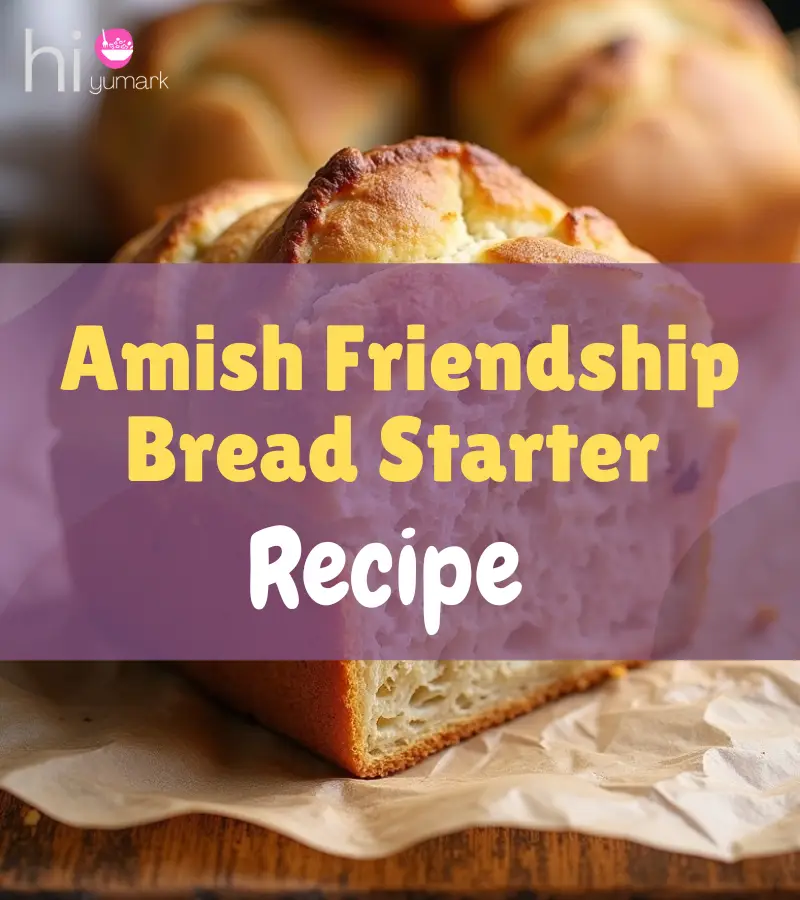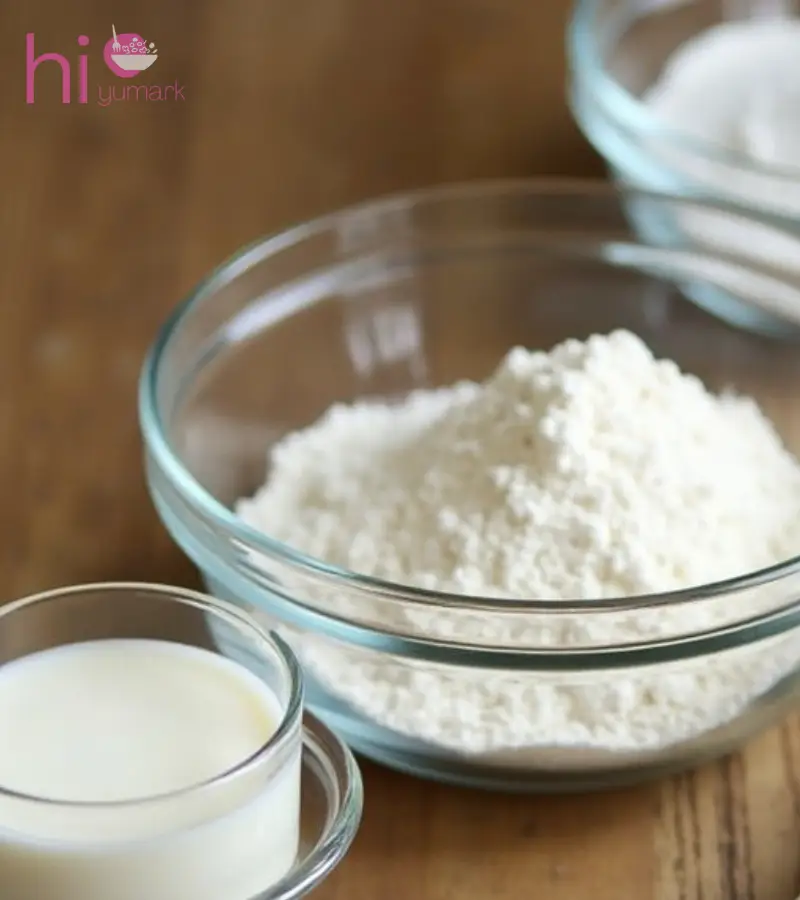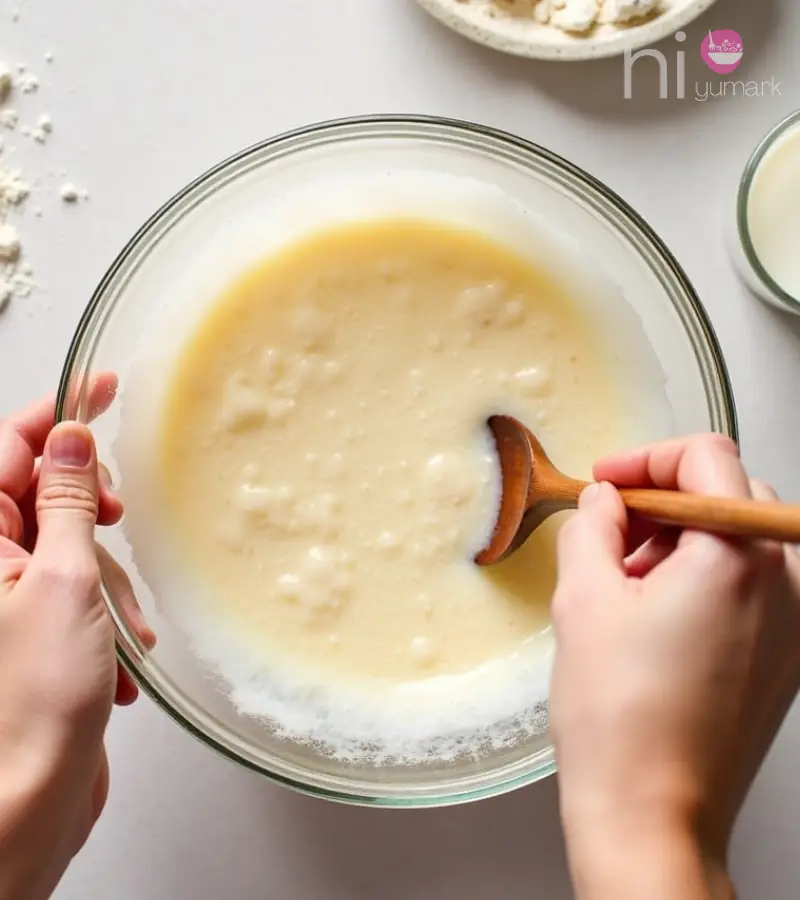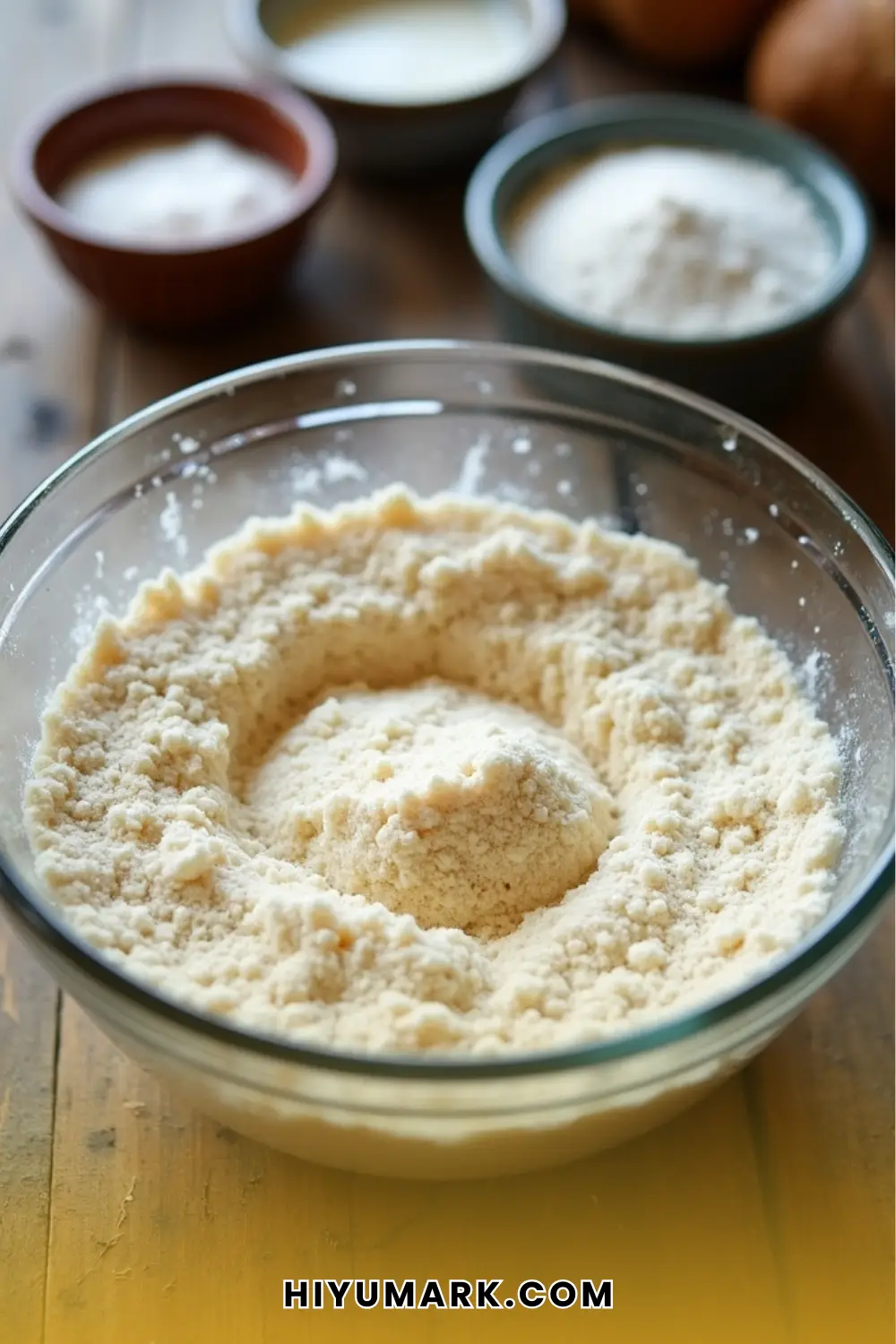Amish Friendship Bread Starter is a delightful, sweet sourdough starter that has been passed down through generations.
It’s not just about baking; it’s about sharing, nurturing, and creating lasting memories.

This guide will walk you through the process of creating your own starter, maintaining it, and using it to bake delicious treats.
Find more timeless recipes in our Traditional Amish Breads article for authentic and classic homemade baking ideas.
Ingredients
- 1 (.25 ounce) package active dry yeast
- ¼ cup warm water (110°F/45°C)
- 1 cup all-purpose flour
- 1 cup granulated sugar
- 1 cup milk (preferably whole milk)
Equipment Needed
- Non-metal bowl or 2-quart container
- Wooden spoon or non-metal utensil
- Plastic wrap or cloth for covering
- Measuring cups and spoons
Day-by-Day Instructions
Day 1: Create the Starter

- In a small bowl, dissolve the yeast in warm water. Let it stand for 10 minutes until foamy.
- In a 2-quart glass, plastic, or ceramic container, combine 1 cup flour and 1 cup sugar. Mix thoroughly.
- Stir in 1 cup milk and the yeast mixture.
- Cover loosely and let stand at room temperature until bubbly.
Days 2-4: Stir Daily
- Stir the mixture once each day with a wooden spoon.
Day 5: Feed the Starter

- Stir in 1 cup flour, 1 cup sugar, and 1 cup milk.
- Mix thoroughly and cover loosely.
Days 6-9: Stir Daily
- Stir the mixture once each day with a wooden spoon.
Day 10: Final Feeding and Sharing
- Stir in the remaining 1 cup flour, 1 cup sugar, and 1 cup milk.
- Mix thoroughly.
- Reserve 1 cup of starter for yourself.
- Divide the remaining starter into 1-cup portions and share with friends, along with a copy of this recipe.
Tips for Success
- Avoid Metal Containers: Use glass, plastic, or ceramic to prevent reactions with the starter.
- Maintain Consistent Temperature: Keep the starter at room temperature, away from drafts.
- Regular Feeding: Feed the starter every 5 days to keep it active.
- Freezing: If you need a break, freeze the starter in 1-cup portions for up to 3 months.
Common Mistakes to Avoid
- Underfeeding: Skipping feedings can weaken the starter.
- Ignoring Signs of Spoilage: Discard if the starter develops a sharp smell or mold.
- Improper Storage: Ensure the starter is loosely covered to allow fermentation gases to escape.
Frequently Asked Questions (FAQs)
Q: Can I use instant yeast instead of active dry yeast?
Ans: Yes, instant yeast can be used as a substitute.
Q: How do I store the starter if I’m not baking immediately?
Ans: Store in the refrigerator and feed weekly.
Q: Can I use the starter for other recipes?
Ans: Yes, it can be used in various baked goods like muffins, pancakes, and cakes.
Conclusion
Amish Friendship Bread Starter is more than just a baking ingredient; it’s a tradition of sharing and community.
By following this guide, you can create your own starter, maintain it, and use it to bake delicious treats that bring joy to you and those around you.
Happy baking!
Amish Friendship Bread Starter – Easy Sourdough Feed
Course: Bread / StarterCuisine: American / AmishDifficulty: Easy1
servings15
minutes20
minutes230
kcal35
minutesA sweet, forgiving sourdough starter you feed for 10 days—then keep one and share the rest. No kneading, just community.
Ingredients
1 (¼ oz) package active dry yeast
¼ cup warm water (110 °F / 45 °C)
1 cup all-purpose flour
1 cup granulated sugar
1 cup milk (preferably whole milk)
Directions
- Day 1: Dissolve yeast in warm water until foamy. Mix with flour, sugar, and milk in a non-metal container. Cover loosely.
- Days 2–4: Stir once daily with a wooden spoon.
- Day 5: Feed - add 1 cup each of flour, sugar, and milk. Stir, cover loosely.
- Days 6–9: Stir once daily.
- Day 10: Final feeding. Reserve 1 cup starter for yourself, divide the rest into 1-cup portions to share.
Recipe Video
Don’t Skip These:
- Don’t use metal containers - it can hurt the starter. Keep your starter warm but away from drafts, and feed it every five days for active bubbling.
For Similar Recipes, See

